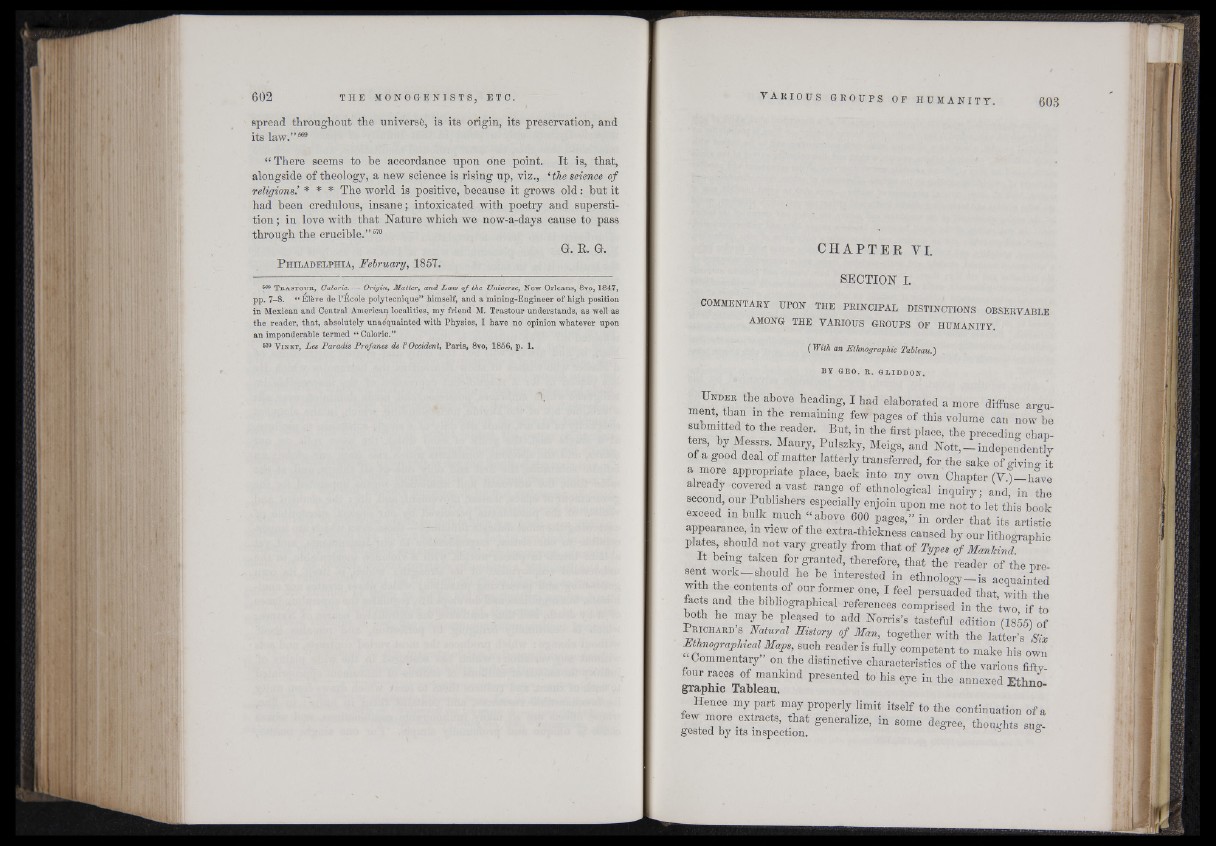
spread throughout the universê, is its origin, its preservation, and
its law.”569
“ There seems to he accordance upon one point. It is, that,
alongside of theology, a new science is rising up, viz., ‘ the science of
religions’ * * * The world is positive, because it grows old : but it
had been credulous, insane ; intoxicated with poetry and superstition
; in loye with that Sature which we now-a-days cause to pass
through the crucible.”570
G. R. G.
P h il a d e l ph ia , February, 1857.
669 T rastour, Caloric. — Origin, Matter, and Law of the Universe, New Orleans, 8yo, 1847,
pp. 7-8. “ Elève de l’Ecole polytecnique” himself, and a mining-Engineer of high position
in Mexican and Central American localities, my friend M. Trastour understands, as well as
the reader, that, absolutely unacquainted with Physics, I have no opinion whatever upon
an imponderable termed “ Caloric.”
570 Vinet, Les Paradis Profanes de V Occident, Paris, 8vo, 1856, p. 1.
CHAPTER VI.
SECTION I.
COMMENTARY UPON THE PRINCIPAL DISTINCTIONS OBSERVABLE
am o n g th e v a r io u s g r o u p s of h u m a n it y .
( With an Ethnographic Tableau.)
B Y GEO. R . G L ID D O N .
U n d e r the above heading, I had elaborated a more diffuse argument,
than m the remaining few pages of this volume can now be
submitted to the reader. But, in the first place, the preceding chapters,
by Messrs Mamy, Pulszky, Meigs, and Nott, _ independently
f a good deal of matter latterly transferred, for the sake of giving- it
a more appropriate place, back into my own Chapter (V.)—have
already covered a vast range of ethnological inquiry; and in the
second, our Publishers especially enjoin upon me not to let this book
exceed m bulk much «above 600 pages,” in order that its artistic
appearance, m view of the extra-thickness caused by our lithographic
plates should not vaiy greatly from that of Types of Mankind.
It being taken for granted, therefore, that the reader of the present
work r should he be interested in ethnology-is acquainted
with thu contents of our former one, I feel persuaded that, with the
facts and the bibliographical references comprised in the two if to
both he may be pleased to add Norris’s tasteful edition (1855) of
P r i c h a r d s Mluml Eistory of Man, together with the latter’s Six
Ethnographical^ Maps, such reader is fully competent to make his own
Commentary on the distinctive characteristics of the various fifty-
four races of mankind presented to his eye in the annexed Ethnographic
Tableau. uo
Hence my part may properly limit itself to the continuation of a
few more extracts, that generalize, in some degree, thoughts sug-
gested by its inspection. °